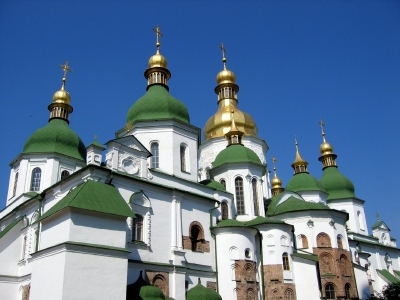What has the Christian Mary to do with Isis, or to reverse it what has Isis, the Pagan Goddess, to do with Mary? Christians who believe that all the expressions of hatred and contempt for Paganism found in the Bible are the “Word” of God will of course answer “None at all!” Many Pagans will respond with a “None at all!” answer as well. After all what can enlightened, tolerant, free thinking Paganism have in common with Mary the white bread imitation of a goddess that Christianity created as a substitute for the real thing.
I do not want respond to these perceptions in this post. However, I do want to explain why I think that Isis and Mary have a lot to do with each other. Since I suspect that most of the readers of this blog are Pagans most of this writing will be a discussion of Mary. To talk about Mary is impossible unless one also discusses Jesus and Christianity. The problem is that there are many forms of Christianity some of which have theologies that are morally repugnant and some of which have real moral and intellectual credibility. Many still interpret Christianity through the lens of intolerant and theologically problematic Protestant and Roman Catholic forms of fundamentalism. For those who see these interpretations as being definitive of what Christianity is, little can be said positive of the religion. A rigid belief system which focuses primarily on the afterlife, on a literal heaven, hell, or purgatory has little to recommend it. A religion which interprets salvation by faith in Jesus to mean that all other non Christian people are lost to an everlasting hell is abominable. The same goes for the belief that the Bible is the only, infallible Word of God. This Christianity is clearly incompatible with the humane religion of the Goddess Isis.
Fundamentalist versions of Christianity, however, are not the only interpretations of Christianity possible. Christian liberalism, social gospel, liberation theology all represent forms of Christianity which focus primarily on the Christian concerns of love of God and neighbor, political, social and economic justice, the kingdom of God and living life righteously in this world. These forms of modern Christianity categorically reject hatred of the other. Further more historically for every Christian Inquisitor and Crusading butcher there have been Christians such as St. Theresa of Avila, Meister Eckart, St Frances of Assisi and countless anonymous men and women who have attempted to live by the highest moral standards.
Something must also be said about the civilizational role of Christianity. I am talking here of the beauty of Christian art and icons, architecture, the great cathedrals, and the great liturgical traditions of worship. I mention these because for many all that Christianity has produced is horror and brutality. Certainly horror and brutality are part of the historical record of Christianity. However that has not been the full picture. Christianity’s record is complex and ambiguous. In that it is entirely human.
The last word I have about Christianity is of course its relationship to Mary. Clearly Mary was the human mother of Jesus who came to be seen by Christians as both Christ and Divine. Early Christianity saw little remarkable in Mary beyond the fact that she suppossedly gave birth to Jesus as a virgin. The Church fathers attention was almost entirely focused on Jesus. After the year 400 CE all of that changed. By 450 CE approximately fifty years latter, Mary had began to receive the adoration and prayers that have characterized Marian devotion within the Eastern Orthodox and Roman Catholic Christianity

The raise of Marian theology and devotionalism is interpreted in many ways. Protestantism of course interprets it negatively. The goddess like status of Mary is a form of Christian paganism or idolatry. Roman Catholic traditionalists while they want to maintain their rich devotional relationship with Mary want to make sure that Mary is kept in the nice safe theological confines of Christian patriarchy. For theologically heterodox Marians, for Mariavites, Collyridians, Sophian Gnostics, etc; Mary is seen and adored as the Feminine Divine, the Incarnation of the Holy Spirit, or the Divine Sophia.
From a theological / historical perspective I believe that the earliest form of Christianity saw God only in the man Jesus. The patriarchal Jewish roots of Christianity could not see the light of God which shined in Mary. What happened in the Fifth Century CE with the rise of the Marian tradition within the Church was the revelation of the Feminine Sacred within Christianity. The theological rise in the status of Mary was not a distortion of the faith but a correction of it.
Glenn King
